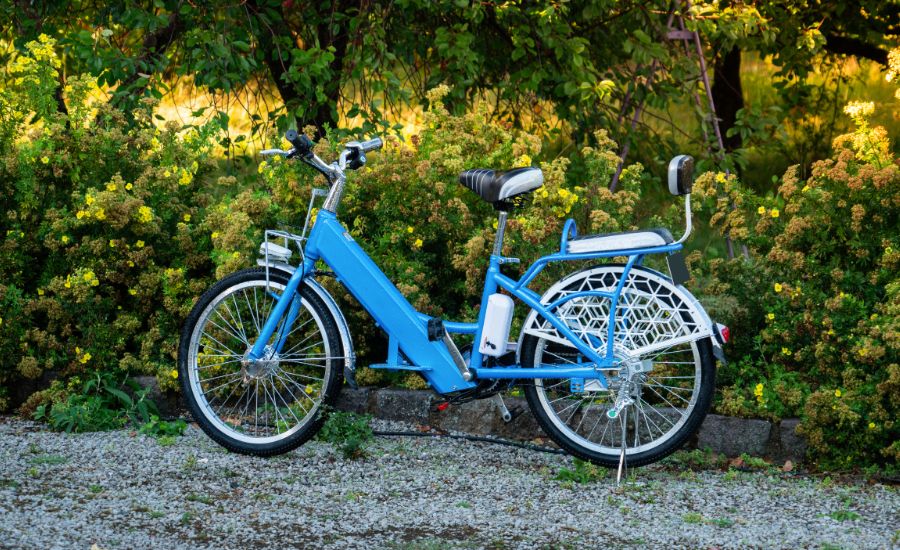Have you heard of electric bikes (or “e-bikes”)? They are becoming increasingly popular, and it isn’t hard to see why. E-bikes can go farther, faster, and higher with less effort than traditional bicycles, making them the perfect choice for anyone who wants to get somewhere quickly without breaking too much of a sweat.
But don’t let the fact that they are powered by a battery fool you: e-bikes are still just as environmentally friendly as regular bikes. Plus, they come with other benefits that make them much more fun—and useful—than their traditional counterparts.
In this article, we’ll explore some pros and cons of e-bikes, so you can decide if one is right for you.
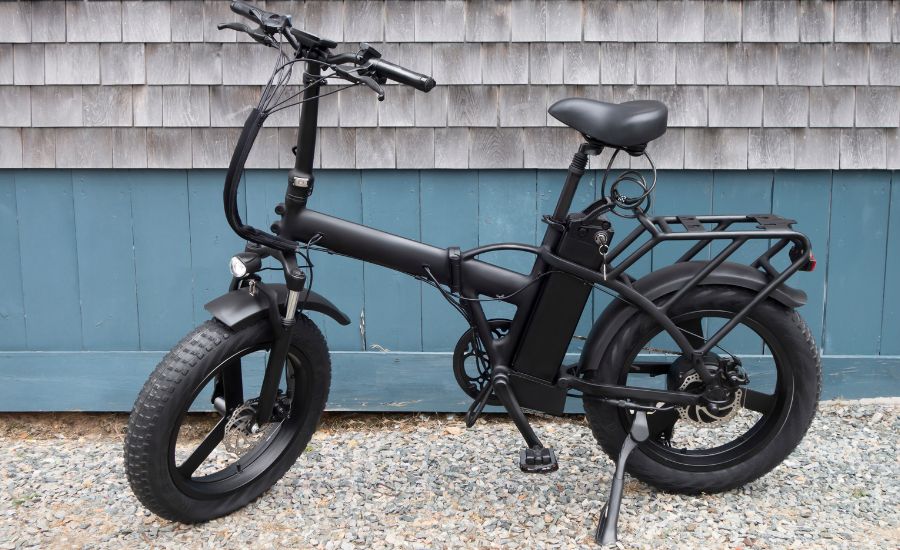
What is an electric bike?
An electric bike, or e-bike, is a great way to get around town. It combines the convenience of regular bikes with the power of an electric motor, so you can easily pedal up hills and keep up with your friends without breaking a sweat. And with the latest developments in battery technology, you can even travel up to 40 miles on a single charge!
E-bikes are available in a variety of styles and price ranges. There are folding models, cargo bikes, and classic road-style designs—all powered by rechargeable batteries and motors.
Some even come with features like automatic shifting and regenerative braking for easier riding and improved battery life.
At their core, e-bikes are designed to provide an enjoyable way to get around town quickly and easily—all while being kinder to the environment than cars or public transportation. So if you’re looking for an eco-friendly way to zip around town (and have some fun while you’re at it!) then an electric bike could be just what you need.
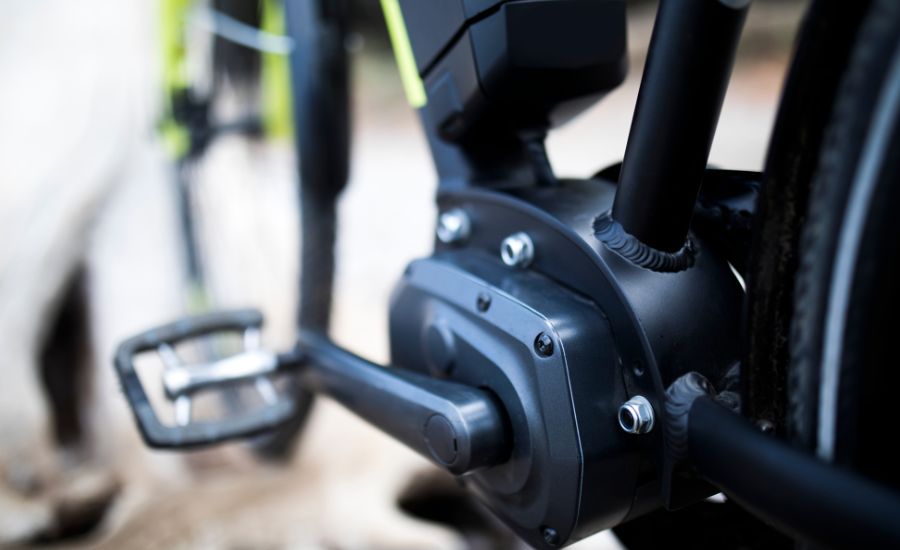
Advantages of using an electric bike
Maybe you’ve been toying with the idea of entering the world of electric bikes. There’s certainly a lot to explore when it comes to e-bikes, from their average speed capability to their eco-friendly qualities.
In short, many advantages come with choosing an e-bike over a standard bike.
For starters, you will enjoy much greater speeds on an e-bike. With their electric motor assist, you can reach speeds of up to 20 mph for longer distances and still maintain excellent handling and control. This makes them great for commuters who want to get across town quickly and easily.
Aside from speed, many people also enjoy riding electric bikes because they are reducing their carbon footprint.
As opposed to cars and trucks, which spew harmful emissions into the air, electric bikes are powered solely by rechargeable batteries that have little to no environmental impact while in use. So, not only will you be saving time, but you’ll also be doing your part in saving the planet.
Trying to find a parking spot can be a nightmare, especially in cities. That’s why you’ll love one of the biggest advantages of e-bikes—they are incredibly easy to park! Since you don’t need much space, you can take your e-bike anywhere, just find a bike rack.
Finally, one advantage an electric bike has over a standard bike is that it makes climbing hills much easier. With their additional torque, riders can tackle steep inclines without having to worry about exhausting themselves or walking their bike up the hill manually. This is great for those who plan on taking long rides through hilly terrain!
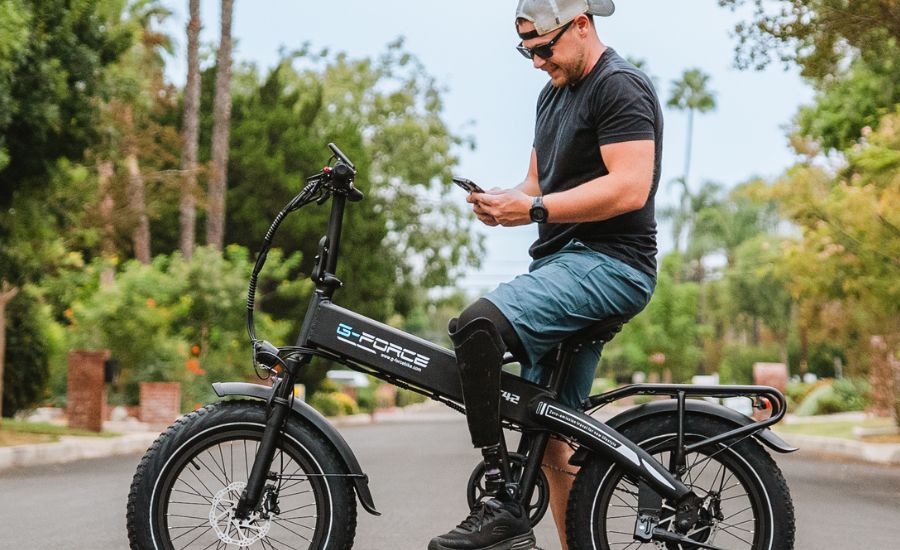
Disadvantages of using an electric bike
Okay, so far, we’ve looked at the many positives of e-bikes, but let’s take a minute to look at the cons of electric bikes, too.
- Expense
First cons of electric bikes—buying an e-bike can be expensive. A typical e-bike costs around $2,000 or more (yikes!), although some entry-level models start at around $800. But keep in mind that you’ll never need to buy gas for your bike.
It’s difficult and very expensive to find a bike shop that can and will fix many e-bikes unless you bought them from them. Plus, if you’re using your bike for commuting purposes, and you live in a city that offers incentives for electric bikes, you could receive a tax credit of up to $1,500!
- Heavier than conventional bikes
Another disadvantage of electric bikes is that they tend to be heavier than regular bike weighs because of the motor and battery components. This extra bulk can make parking and storing your bike tricky—so it’s important to think through where and how you plan on storing it when you’re not using it.
- Limited range
The range on an electric bike is also a consideration—it typically ranges between 15 and 100 miles per charge. Typically, heavier riders require more battery power and may experience shorter distances per charge than lighter riders.
However, adding bigger batteries can increase the range while reducing performance—so it’s best to work out your needs before purchasing an e-bike.
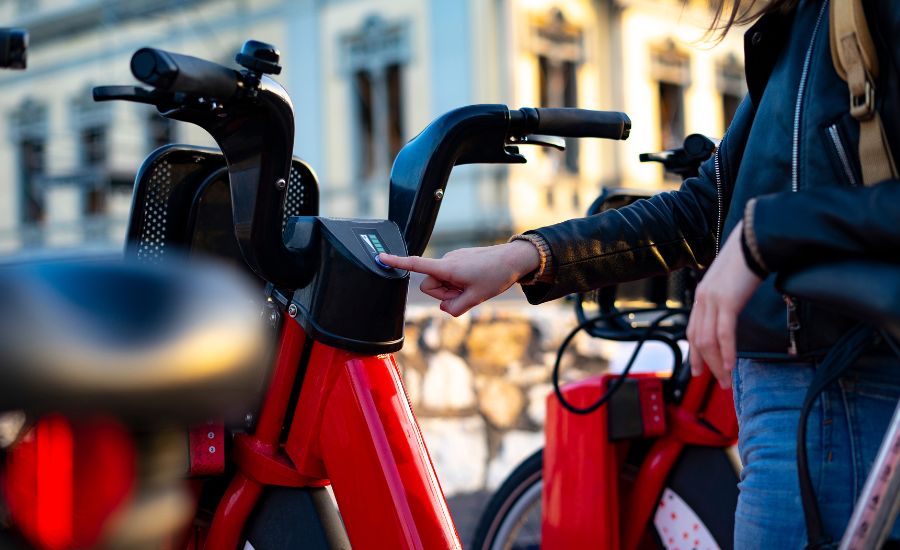
Types of electric bikes available
When it comes to electric bikes, there are several different types available at bike shops.
Do you want something a bit more stylish than a regular bicycle, with all the benefits of an electric bike, plus their usual mobility?
E-bikes come in all shapes and sizes, so you can pick out something that reflects your style. From sleek and modern models to classic vintage designs, there’s an e-bike for everyone.
You can find specialized e-bikes for mountain biking, commuting, or leisure riding as well. And because there’s such a variety of designs available, it’s much easier to find a bike that suits your needs and preferences!
- Hybrid electric bikes
Hybrid electric bikes combine the convenience of an e-motor with the power and control of a conventional bike. These models are perfect for commuters, offering great range while still allowing the rider to pedal normally when needed.
- Folding electric bikes
These lightweight, compact models are perfect for portability and getting around town quickly. They offer good battery life, making them ideal for short trips and errands. Plus, their small size makes them easy to store away when not in use!
- Off-road electric bikes
Off-road electric bikes are designed to tackle more challenging terrain. With robust frames and powerful motors, they’re ideal for tackling rocky trails or exploring more remote areas without tiring you out too quickly.
Each type of electric bike has its set of advantages – so whatever your needs may be, there is a bike that’s perfect for you!

About pedal assist systems (PAS or Pedelec)
You may have heard of electric bikes with a Pedal Assist System (PAS), or Pedelec. These are extremely efficient and effective electric bikes that give you the power to ride farther, faster, and longer – with no emissions!
PAS is a type of motorized pedal assistance technology that can sense when you’re pedaling and then provide electric power accordingly. Here’s what it does:
- Monitors rider’s pedaling effort – A PAS system monitors the amount of effort you’re using to pedal and will adjust the power accordingly. It works with your effort to give a smooth, comfortable bike ride.
- Battery life -Pedal assist systems help extend battery life by providing just enough electric power to help with your pedaling efforts without draining the battery too quickly. This results in more range for your rides, so you can get out there for longer, more exciting adventures! And you can still ride your electric bike if your battery dies.
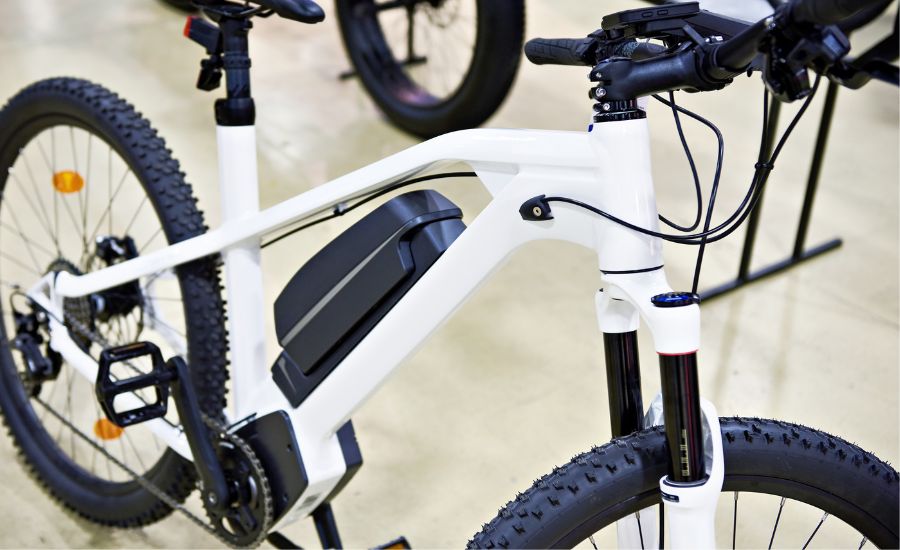
Electric bike batteries
E-bikes often include a battery, and it’s important to know the basics. Most electric bikes use either lead acid or lithium-ion batteries, both of which come with their pros and cons.
- Lead acid batteries
Lead acid batteries are heavier and less efficient than lithium-ion batteries, but they are also more durable and tend to cost less. These batteries need to be charged more frequently, so they may not be ideal for longer rides.
- Lithium batteries
Lithium batteries are lighter, more efficient, provide greater range, and require less frequent charging. They can be easily removed from the bike for charging, which makes them a great option for cyclists who don’t have access to an external power source when on the move.
However, Lithium batteries cost more than lead acid batteries and can be damaged if not charged correctly.
No matter which battery you choose, you’ll get a boost of power when it matters most: while pedaling uphill or over windy terrain!
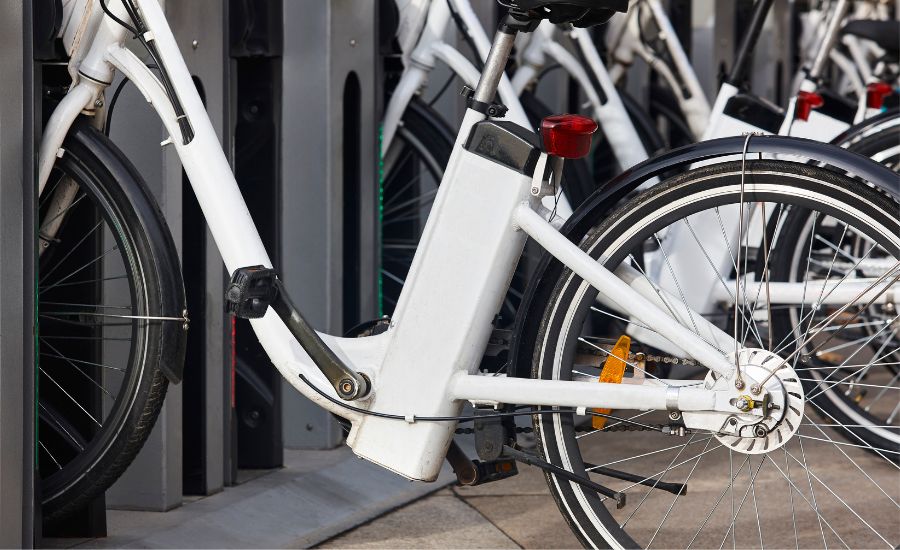
Regulations and safety standards for e-bikes in the USA
The great news is that the USA has regulations in place for electric bikes! These standards are meant to protect consumers from unsafe and unreliable products.
These include:
- Requirements for the proper labeling of electric bikes and parts, so that you know exactly what you’re getting.
- Specifications for the types of electric motors that can be used on electric bikes.
- Standards regarding the maximum speed and own power output allowed on an e-bike.
- Restrictions on who can ride an e-bike, as well as where you can ride it.
In terms of safety, there are even more potential benefits to riding an electric bike compared to a regular one.
For example, as many riders know, stopping suddenly on a regular bike can cause serious injury — but with an electric bike, a third brake (additional to the two brake pads) gives riders greater control in high-traffic areas or when faced with unexpected obstacles.
In general, electric bikes with a maximum speed of 20 mph and motors rated at less than 750 watts are treated the same as any other bicycle, which means they can be ridden on bike paths and in bike lanes and don’t require any special licensing or registration.
You can be sure that your e-bike is manufactured and tested to the highest standards for quality, performance, and safety when you buy from retailers who adhere strictly to these regulations set by the USA Department of Transportation. A quality product ensures your complete peace of mind — now go out there and have some fun!
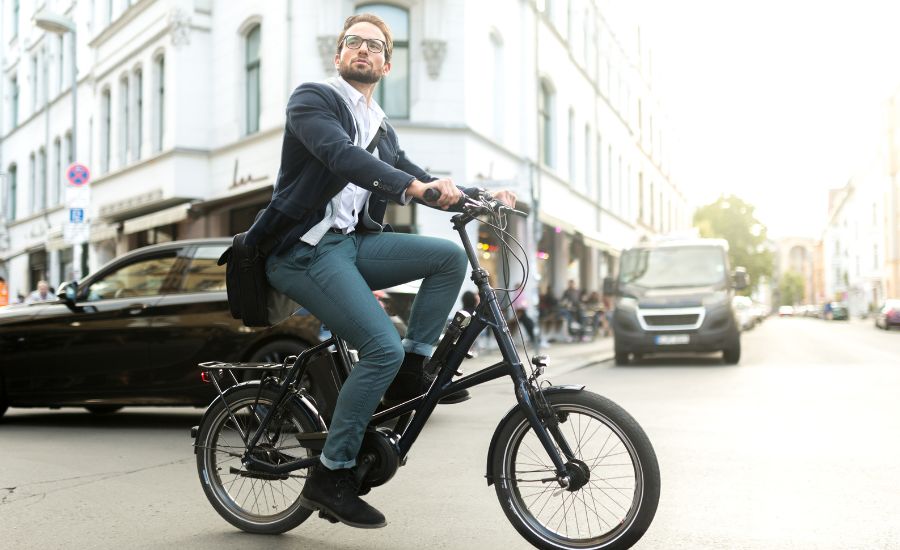
Electric bicycle conversion kits
Have you heard of electric bicycle conversion kits? Not only there are conversion kits easy to install, but they can transform your existing bicycle into an electric one, saving you both money and time!
E-bike conversion kits are the perfect solution if you’d like the benefits of an electric bike without having to buy a brand-new one. If you already have a bicycle that you love, this is the way to go. All you need to do is get a conversion kit and install it onto your existing bike.
- Components
With a conversion kit, you have complete control over all the components and specs of your bike.
The most common components in these kits include:
- A motor
- A front or rear-wheel hub
- A battery
- Controller
- Throttle and/or pedal assist sensor
- Fittings for mounting the components onto your bike
The nice thing about these kits is that they come with all the parts needed to convert your existing bike into an electric one, and they’re usually very simple to install—no extra tools required.
Plus, you can customize your ride however you want.
With a few simple adjustments, you can get your dream e-bike in no time!
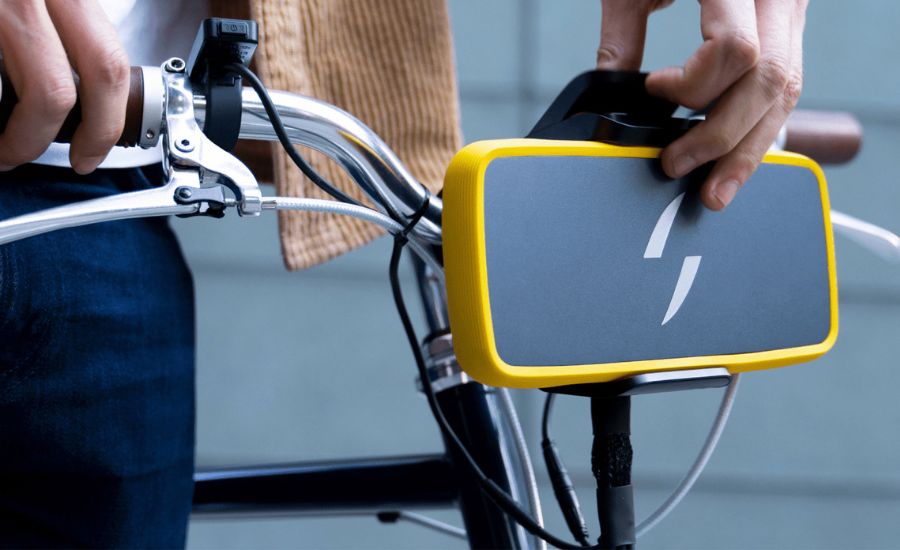
How to take care of electric bicycles
It’s easy to take care of an e-bike! All it takes are some regular preventative maintenance measures, including:
- Cleaning
Clean the bike regularly, and pay special attention to the drive system. Electric bicycle motors need to stay free of dirt, mud, and other debris so that they can continue to run smoothly.
- Charging
Keep an eye on the battery level as you commute and make sure it is charging enough between rides. If your battery has a low level of charge, you may see reduced power when you’re out on a ride.
- Lubricating
Make sure all moving parts are lubricated with a product specifically designed for electric bikes, like those from leading electric bike brands. It’s important to use the correct lubricant so that it doesn’t damage any of the bike components.
By following these simple steps, your bike will still be in great condition for years to come!

Conclusion
To sum it up, electric bikes are an incredibly fun and healthy way to commute. They give you the same freedom and pleasure as electric biking, with the added benefit of being more environmentally friendly and versatile.
Electric bikes offer a great way to stay active and explore the outdoors, while still helping the environment. Plus, they’re far less expensive than a car and require much less maintenance. If you’re looking for a fast and fun way to get around, an e-bike may be the perfect option for you.
If you’re still doubting, give it a test ride, and maybe you will open a whole new world for yourself!
FAQ
Do you have questions about electric bikes? Of course, you do! Let’s take a look at some frequently asked questions.
What is the difference between an electric bike and a regular bike?
The main difference between an electric bike and a regular bike is that an e-bike has an electric motor, which allows riders to travel farther and faster with less physical effort than on a regular bike.
However, a hub motor can also make the bike heavier and may not provide the same level of torque as mid-drive motors, potentially affecting hill-climbing performance. Electric bikes also feature various accessories, such as battery chargers, regenerative brake levers, and off-road tires.
Are there any health benefits of riding electric bikes?
Absolutely! Riding an e-bike can provide numerous health benefits for riders of all ages. For instance, it can help improve your cardiovascular health because it promotes active transportation.
Additionally, electric bikes provide low-impact exercise that can help reduce stress levels and improve balance and coordination.
What are the pros and cons of electric bicycles?
The benefits of e-bikes include pedal help, quicker and simpler rides, being environmentally friendly, and being accessible to a larger spectrum of individuals. The disadvantages include a greater cost, increased weight, a limited range owing to battery life, and the requirement for maintenance and eventual battery replacement.
What are the disadvantages of electric bike?
Cons of electric bikes include: a greater cost, being heavier, may have a limited range owing to battery life, and requiring regular charging and subsequent battery replacement.
Are electric bikes worth having?
E-bikes may be beneficial to many people, providing advantages such as assistance with climbs, less physical exertion, and a speedier commute. Yet, depending on personal preferences and special needs, they may not be suited for everyone. Parking an electric bike is so much easier than parking cars, all it takes is just to find a bike rack.
Why not buy an electric bike?
A greater initial cost, a preference for traditional riding exercise, or living in an area with inadequate charging infrastructure or inappropriate terrain for electric bikes are all reasons to avoid purchasing e-bikes.
Is it easy to charge an e-bike?
Yes, it’s extremely easy to charge an electric bike! Electric bike batteries typically come with their charger — plug the charger into a wall outlet, connect your battery to the charger, and wait until the light on the charger changes from red to green. Most batteries take around four hours to fully charge.

